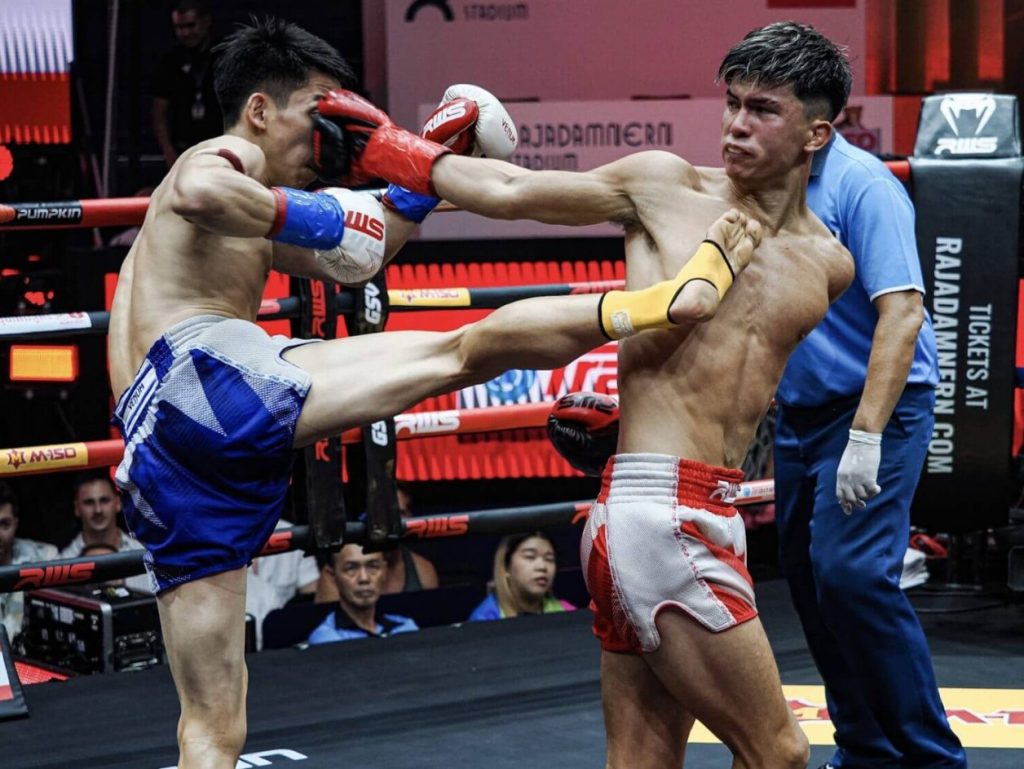Muay Thai, also known as “The Art of Eight Limbs,” is a traditional martial art and combat sport from Thailand. While its devastating strikes and clinch work are well-known, the ceremonial and cultural elements of Muay Thai are equally significant. One of the most iconic visuals in Muay Thai is what fighters wear on their heads, especially during the Wai Khru Ram Muay ritual before a bout begins. These headpieces carry deep cultural meaning, spiritual protection, and symbolic power.
Crazy Time: Table of Contents
This article explores the headgear worn by Muay Thai fighters, focusing on traditional items like the Mongkhon, and practical protective gear used during training and sparring. Tables are included to help clarify their use and significance.
Traditional Muay Thai Headwear: The Mongkhon
What is the Mongkhon?
| Item | Name | Purpose | When Worn | Material |
|---|---|---|---|---|
| Headband | Mongkhon | Spiritual protection, tradition, respect | During Wai Khru | Fabric, cords, sacred items |
| Arm bands | Pra Jiad | Courage, luck, remembrance | During fight | Fabric (often from family clothing) |
The Mongkhon is usually blessed by a monk or the fighter’s trainer (called a Kru) and is considered sacred. Removing it or placing it on the ground is seen as disrespectful.
Significance of the Mongkhon in Muay Thai
The Mongkhon is rich in symbolism and is central to the traditions of Muay Thai. Here’s a breakdown of its significance:
Symbolism of the Mongkhon
| Symbolism | Explanation |
|---|---|
| Spiritual Protection | Believed to protect fighters from harm through blessings and rituals |
| Respect for Teachers | Shows reverence to the trainer and gym, worn during the Wai Khru ceremony |
| Cultural Identity | Reinforces the Thai heritage and values of discipline and humility |
| Mental Preparation | Helps fighters focus, center themselves, and prepare mentally for combat |
The Wai Khru Ram Muay Ritual
Before every sanctioned fight in Thailand and many other countries, Muay Thai fighters perform a ritual called the Wai Khru Ram Muay. This is a dance performed in the ring, paying respect to:
- The fighter’s coach and gym
- Parents and ancestors
- The spirit of the sport
Kaisi Time: Practical Headgear for Training and Sparring
While the Mongkhon is ceremonial, practical headgear is essential during training and sparring to ensure safety.
Practical Headgear in Muay Thai
| Type of Gear | Name | Used During | Purpose | Material |
|---|---|---|---|---|
| Sparring Headgear | Head Guard | Sparring, Amateur Bouts | Protects skull, ears, and forehead | Foam, Leather/PU |
| Mouth Protection | Mouthguard | All training/sparring | Protects teeth, jaw | Silicone/Plastic |
| Groin Protector | Cup | Sparring | Protects groin area | Plastic/Steel |
Unlike the Mongkhon, head guards are not traditional or ceremonial; they are functional and often required in amateur fights and gym sparring sessions to prevent injuries.
Differences Between Professional and Amateur Fighters
| Category | Professional Fighters | Amateur Fighters |
|---|---|---|
| Mongkhon | Always worn during pre-fight ritual | Usually worn if trained in traditional gym |
| Head Guards | Not used in pro fights | Common in amateur fights for protection |
| Wai Khru Ritual | Always performed | Optional, depending on promotion |
In professional stadiums in Thailand (e.g., Lumpinee or Rajadamnern), the full Wai Khru and Mongkhon ritual is a must. Internationally, however, some modern promotions may skip or abbreviate these traditions.
Cultural Etiquette Surrounding Headgear
Because the Mongkhon is sacred, there are specific cultural rules about how it should be treated:
Do’s and Don’ts of the Mongkhon
| Do | Don’t |
|---|---|
| Let only your Kru or trainer handle it | Never place it on the floor |
| Store it in a clean, respected place | Do not wear it casually or for photoshoots |
| Wear it with respect during ceremonies | Avoid touching it with unwashed hands |
Kg Time: These rules are not merely superstitions; they stem from deep cultural and religious beliefs in Thailand, often connected to Buddhism and animism.
The headgear worn by Muay Thai fighters reflects both cultural tradition and practical necessity. The Mongkhon is a powerful symbol of spiritual protection, cultural pride, and reverence for one’s teachers, worn only during the ceremonial Wai Khru. In contrast, modern protective headgear like padded helmets and mouthguards ensure safety during training and amateur bouts.
Understanding what Muay Thai fighters wear on their heads reveals a deeper appreciation for the sport’s rich heritage and its evolving practices. Whether it’s the blessed Mongkhon or a padded headguard, each piece serves a unique and important role in shaping a fighter’s journey.

